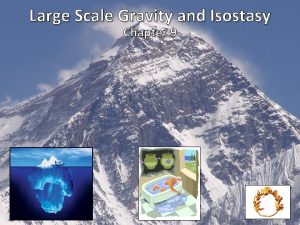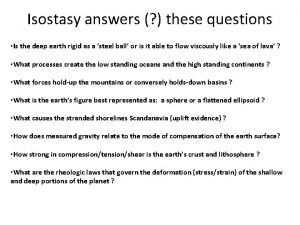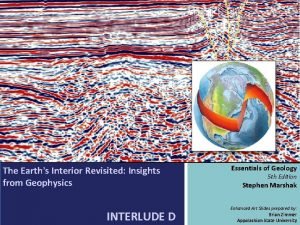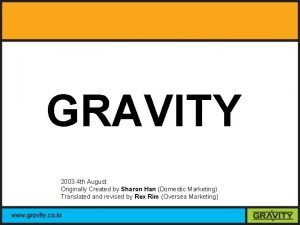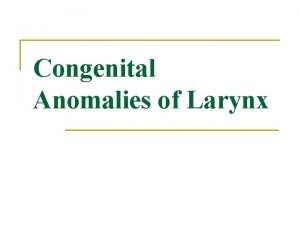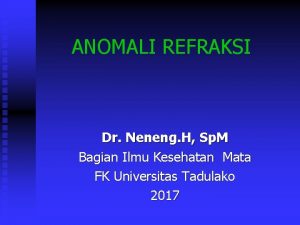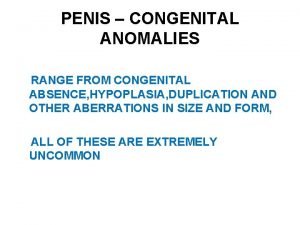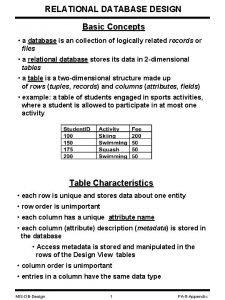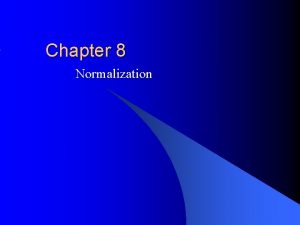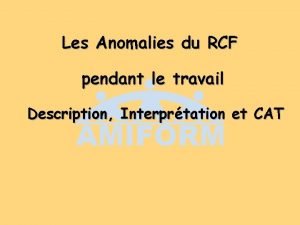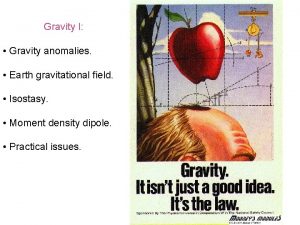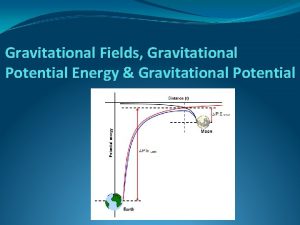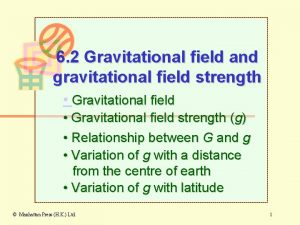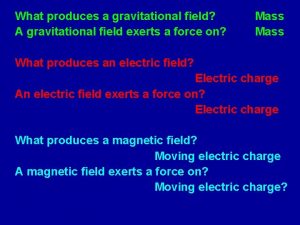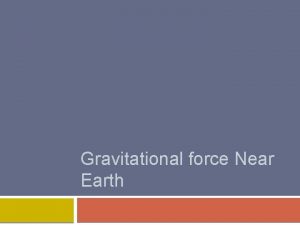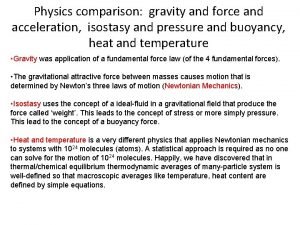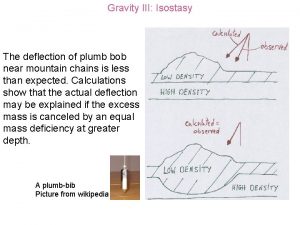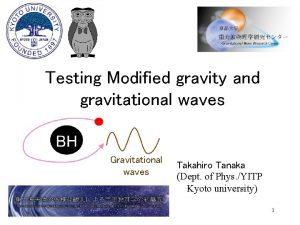Gravity Gravity anomalies Earth gravitational field Isostasy Moment

















- Slides: 17

Gravity: • Gravity anomalies. • Earth gravitational field. • Isostasy. • Moment density dipole. • Practical issues.

The basics Newton’s law of gravitation: where: • F is the force of gravitation. • m 1 and m 2 are the masses. • r is the distance between the masses. • is the gravitational constant that is equal to 6. 67 x 10 -11 Nm 2 kg-2 (fortunately is a small number). Units of F are N=kg m s-2.

The basics Newton’s second law of motion: where: • m is the mass. • a is acceleration. By combining the universal law of gravitation with Newton’s second law of motion, one finds that the acceleration of m 2 due to its attraction by m 1 is:

The basics Gravitational acceleration is thus: where: • ME is the mass of the Earth. • RE is the Earth’s radius. Units of acceleration are m s-2, or gal=0. 01 m s-2. Question: Is earth gravitational field a constant? Question: Is earth gravitational field greater at the poles or at the equator?

The basics • The Earth is an oblate spheroid that is fatter at the equator and is thinner at the poles. • There is an excess mass under the equator. • We now know that it is the Earth that is rotating. Centrifugal acceleration reduces gravitational attraction. Thus, the further you are from the rotation axis, the greater the centrifugal acceleration is.

The basics A scalar field associates a single number (or scalar) to every point in space. Question: Examples for a scalar field? Answer: Temperature, topography and pressure.

The basics A vector field associates a vector to every point in space. Question: Examples for a vector field? Answer: Speed, strength and forces, such as the gravitational force.

The basics How are scalar and vector fields related to one another? The gradient of a scalar field is a vector field.

The basics Now g is a vector field: where r is a unit vector pointing towards the earth’s center. The gravitational potential, U, is a scalar field: (verify that U is the potential field of g. ) • Note that earth’s gravitational potential is negative. • Potentials are additive, and this property makes them easier (than vectors) to work with.

Surface gravity anomalies due to some buried bodies The general equation is: where: is the gravitational constant is the density contrast r is the distance to the observation point a is the angle from vertical V is the volume Question: Why a cosine term? Question: Express the gravity anomaly in Cartesian coordinates.

Surface gravity anomalies due to simple-shape bodies Simple analytical solutions may be derived for simple-shaped buried bodies with uniform density contrast. A sphere: 0 z a x/z

Surface gravity anomalies: forward versus inverse proplem In the preceding slide we have looked at the result of a forward modeling also referred to as the direct problem: In practice, however, the inverse modeling is of greater importance: Question: Can the data be inverted to obtain the density, size and shape of a buried body?

Surface gravity anomalies: forward versus inverse problem • Inspection of the solution for a buried sphere reveals a nonuniqueness of that problem. The term a 3 introduces an ambiguity to the problem. This is because there are infinite combinations of and a 3 that give the same a 3. • This highlights the importance of adding geological and geophysical constraints!

Surface gravity anomalies: spatial extent What should be the spatial extent of the surveyed region? • Going back to the sphere anomaly, we see that the signal due to a sphere buried at a depth Z can only be well resolved at distances out to 2 -3 Z. • Thus, to resolve details of density structures of the lower crust (say 20 -40 km), gravity measurements must be made over an extensive area.

Surface gravity anomalies due to simple-shape bodies An infinite horizontal slab of finite thickness: Setting (y)= c and integration with respect to r from zero to infinity and with respect to y between 0 and h leads to: Note that the gravity anomaly caused by an infinite horizontal slab of thickness h and density c is independent of its distance b from the observer.

Surface gravity anomalies due to complex-shape bodies Gravity effects due to complex shapes may be calculated either numerically or graphically. The numerical approach The numerical implementation of this approach is straight forward.

Surface gravity anomalies due to complex-shape bodies The graphical approach: This is done using templates superimposed on a cross section that is divided into elementary areas, each of which contributes equally at the surface station Station of two Dimensional structure surface z The gravity effect of a cell at the chart origin is: with being the rock density and the universal gravity constant.
 Isostasy
Isostasy Isostasy
Isostasy Isostasy animation
Isostasy animation Gravitational field ragnarok
Gravitational field ragnarok Gravitational field
Gravitational field Newton's law of universal gravitation
Newton's law of universal gravitation Gravity for dummies and dummies for gravity equations
Gravity for dummies and dummies for gravity equations Most common congenital anomalies
Most common congenital anomalies Biolateral macostomia
Biolateral macostomia Irregularities in population pyramids
Irregularities in population pyramids Accommodation anomalies
Accommodation anomalies Disease penis
Disease penis Database anomalies
Database anomalies Ferri
Ferri Modification anomalies
Modification anomalies Causes of congenital anomalies
Causes of congenital anomalies Anomalies du rcf pendant le travail
Anomalies du rcf pendant le travail Rbc anomalies
Rbc anomalies
